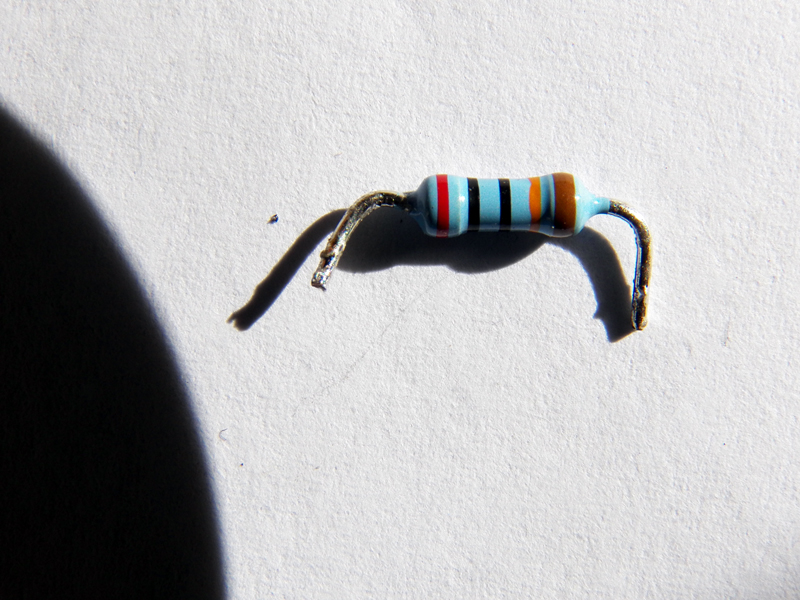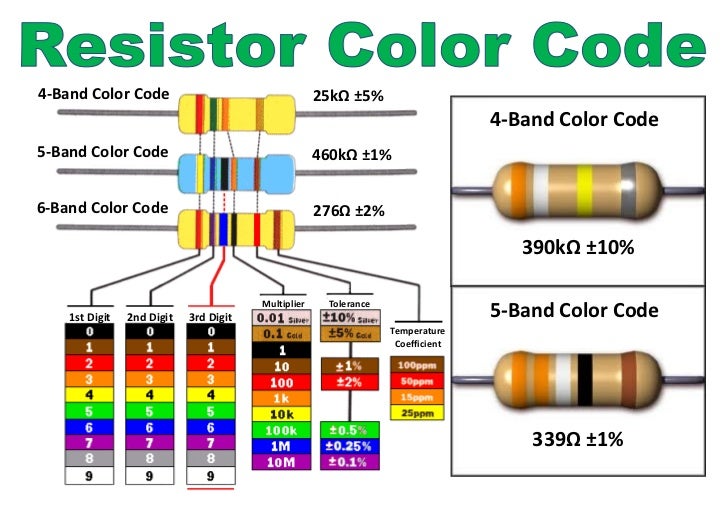Tech Talk
Forum home - Go back to Tech talk
|
Resistor Colour Code.
|
|
|
« Back ·
1 ·
Next »
|
|
|
Return to top of page · Post #: 1 · Written at 4:21:15 PM on 24 June 2015.
|
|
|
|
Location: Tynong North, VIC
Member since 9 April 2009 Member #: 464 Postcount: 37 |
|
Hi,  |
|
|
Return to top of page · Post #: 2 · Written at 4:48:07 PM on 24 June 2015.
|
|
|
|
Location: Wangaratta, VIC
Member since 21 February 2009 Member #: 438 Postcount: 5606 |
|
The colours tell you the value of the resistor, only some like wire wound are likely to have a numeric value. |
|
|
Return to top of page · Post #: 3 · Written at 6:14:24 PM on 24 June 2015.
|
|
|
|
Location: Tynong North, VIC
Member since 9 April 2009 Member #: 464 Postcount: 37 |
|
Hi Marc, |
|
|
Return to top of page · Post #: 4 · Written at 6:18:18 PM on 24 June 2015.
|
|
|
|
Location: Sydney, NSW
Member since 28 January 2011 Member #: 823 Postcount: 6887 |
|
Zamiac, |
|
|
Return to top of page · Post #: 5 · Written at 10:57:54 PM on 24 June 2015.
|
|
|
|
Administrator
Location: Naremburn, NSW
Member since 15 November 2005 Member #: 1 Postcount: 7564 |
|
I should put one of those things here. It'd have to wait until some other projects are completed though. Also, I'd allow for the 1% tolerance resistors. ‾‾‾‾‾‾‾‾‾‾‾‾‾‾‾‾‾‾‾‾‾‾‾‾‾‾‾‾‾‾‾‾‾‾‾‾‾‾‾‾‾‾‾‾‾‾‾‾‾‾‾‾‾‾‾‾‾‾‾‾‾‾‾‾‾‾‾‾ A valve a day keeps the transistor away... |
|
|
Return to top of page · Post #: 6 · Written at 8:06:35 AM on 25 June 2015.
|
|
|
|
Location: Blue Mountains, NSW
Member since 10 March 2013 Member #: 1312 Postcount: 401 |
|
There's good apps around for android and iPhone as well. I use Ohms Law and Electrodroid |
|
|
Return to top of page · Post #: 7 · Written at 10:03:02 AM on 25 June 2015.
|
|
|
|
Location: Wangaratta, VIC
Member since 21 February 2009 Member #: 438 Postcount: 5606 |
|
One of the things I do as an attempt to stop mates, getting it wrong & as reminder: All but a few wire & reclaimed resistors are stored in order in seed envelopes (more space effective & convenient). |
|
|
Return to top of page · Post #: 8 · Written at 5:52:51 AM on 26 June 2015.
|
|
|
|
Location: Oradell, US
Member since 2 April 2010 Member #: 643 Postcount: 835 |
|
That looks like a 1% resistor, 3 digits and then a multiplier. 2 0 0 3 = 200 * 10^3 = 200K |
|
|
Return to top of page · Post #: 9 · Written at 8:48:49 PM on 1 July 2015.
|
|
|
|
Location: Maclean, NSW
Member since 30 May 2008 Member #: 291 Postcount: 341 |
|
Can't you just meter that resistor, or is it open circuit? |
|
|
Return to top of page · Post #: 10 · Written at 6:07:11 PM on 15 August 2015.
|
|
|
|
Location: Penrith, NSW
Member since 7 April 2012 Member #: 1128 Postcount: 403 |
|
Not mentioned here are a few things that might be of interest to some. ‾‾‾‾‾‾‾‾‾‾‾‾‾‾‾‾‾‾‾‾‾‾‾‾‾‾‾‾‾‾‾‾‾‾‾‾‾‾‾‾‾‾‾‾‾‾‾‾‾‾‾‾‾‾‾‾‾‾‾‾‾‾‾‾‾‾‾‾ I love the smell of ozone in the morning. |
|
|
« Back ·
1 ·
Next »
|
|
|
You need to be a member to post comments on this forum.
|
|

Sign In

Vintage Radio and Television is proudly brought to you by an era where things were built with pride and made to last.
DISCLAIMER: Valve radios and televisions contain voltages that can deliver lethal shocks. You should not attempt to work on a valve radio or other electrical appliances unless you know exactly what you are doing and have gained some experience with electronics and working around high voltages. The owner, administrators and staff of Vintage Radio & Television will accept no liability for any damage, injury or loss of life that comes as a result of your use or mis-use of information on this website. Please read our Safety Warning before using this website.
WARNING: Under no circumstances should you ever apply power to a vintage radio, television or other electrical appliance you have acquired without first having it checked and serviced by an experienced person. Also, at no time should any appliance be connected to an electricity supply if the power cord is damaged. If in doubt, do not apply power.
Shintara - Keepin' It Real · VileSilencer - Maintain The Rage



